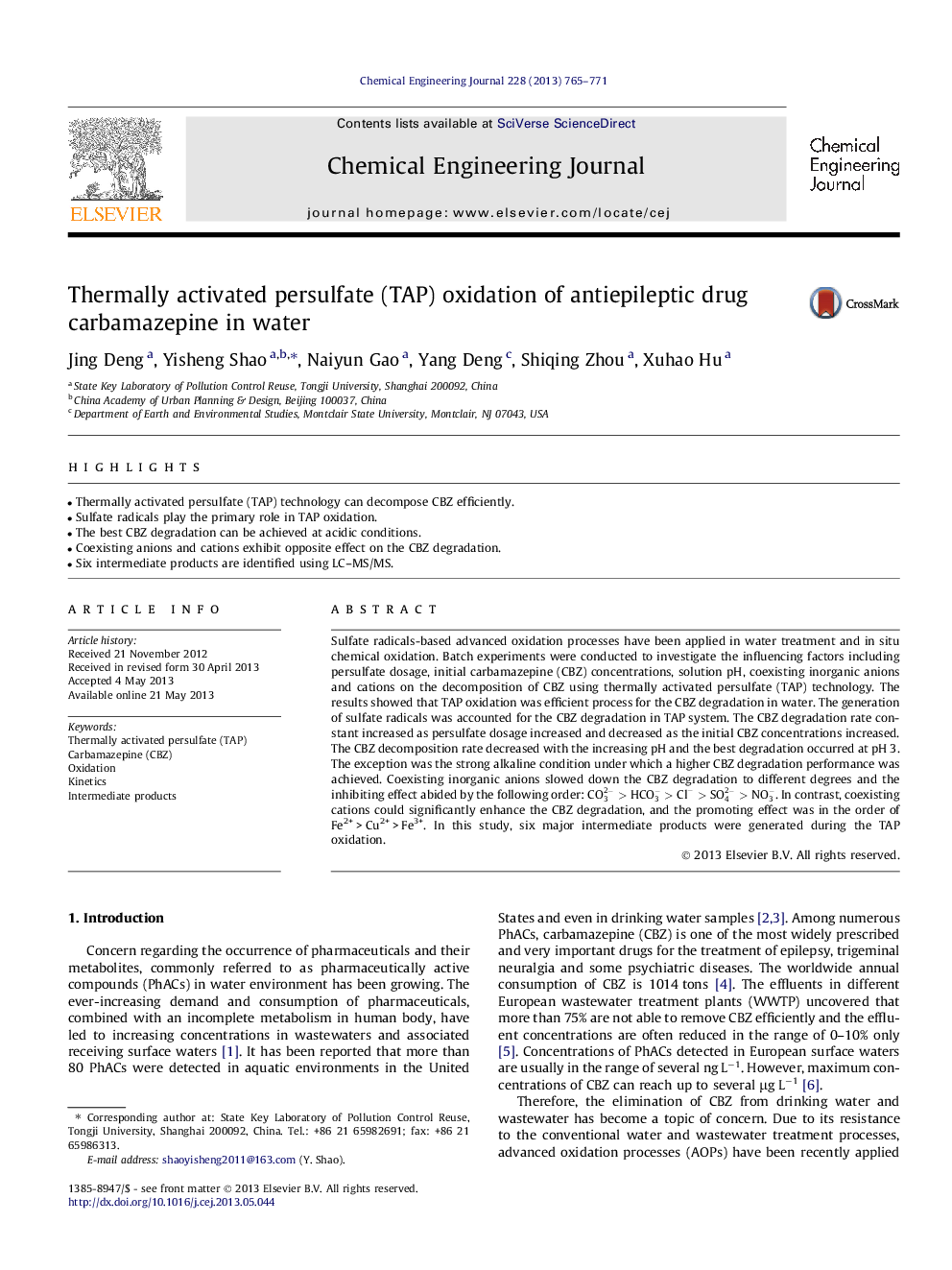| Article ID | Journal | Published Year | Pages | File Type |
|---|---|---|---|---|
| 6587451 | Chemical Engineering Journal | 2013 | 7 Pages |
Abstract
Sulfate radicals-based advanced oxidation processes have been applied in water treatment and in situ chemical oxidation. Batch experiments were conducted to investigate the influencing factors including persulfate dosage, initial carbamazepine (CBZ) concentrations, solution pH, coexisting inorganic anions and cations on the decomposition of CBZ using thermally activated persulfate (TAP) technology. The results showed that TAP oxidation was efficient process for the CBZ degradation in water. The generation of sulfate radicals was accounted for the CBZ degradation in TAP system. The CBZ degradation rate constant increased as persulfate dosage increased and decreased as the initial CBZ concentrations increased. The CBZ decomposition rate decreased with the increasing pH and the best degradation occurred at pH 3. The exception was the strong alkaline condition under which a higher CBZ degradation performance was achieved. Coexisting inorganic anions slowed down the CBZ degradation to different degrees and the inhibiting effect abided by the following order: CO32->HCO3->Cl->SO42->NO3-. In contrast, coexisting cations could significantly enhance the CBZ degradation, and the promoting effect was in the order of Fe2+Â >Â Cu2+Â >Â Fe3+. In this study, six major intermediate products were generated during the TAP oxidation.
Related Topics
Physical Sciences and Engineering
Chemical Engineering
Chemical Engineering (General)
Authors
Jing Deng, Yisheng Shao, Naiyun Gao, Yang Deng, Shiqing Zhou, Xuhao Hu,
